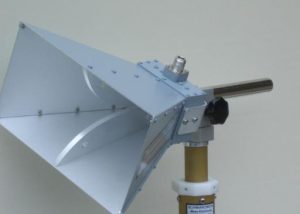What Is Unique About the WR-28 Waveguide?
The WR-28 waveguide is a distinguished member of the waveguide family, designed specifically for high-frequency microwave applications within the Ka-band, ranging from 26.5 GHz to 40 GHz. This waveguide's unique features and specifications make it an essential tool in advanced telecommunications, radar technology, and research applications. Let's delve into the distinctive aspects that set the WR-28 waveguide apart from others in its class.

Optimized Frequency Band
The WR-28 waveguide operates in the Ka-band, which is particularly useful for high-bandwidth communications that require smaller antennas and higher precision in signal handling.
Benefits of the Ka-band:
- Higher Data Rates: Allows for transmission of data at significantly higher rates, essential for satellite communications and terrestrial broadband networks.
- Reduced Antenna Size: Higher frequencies mean shorter wavelengths, which allow for smaller and more compact antenna designs.
Precision and Efficiency
The design of the WR-28 is tailored to handle high frequencies with reduced signal loss, making it highly efficient for its designated frequency range.
Design Characteristics:
- Dimensions: The standard dimensions for the WR-28 are 7.112 mm by 3.556 mm, which are precisely engineered to optimize performance at its operating frequencies.
- Material Quality: Typically constructed from high-quality metals such as copper or silver, which provide excellent electrical conductivity and resistance to corrosion.
Applications in Cutting-Edge Technologies
The WR-28 waveguide is not just another component; it is pivotal in the deployment of state-of-the-art technologies across various sectors.
Critical Uses Include:
- Satellite Communications: Employs WR-28 waveguides to facilitate communication between ground stations and spacecraft, supporting both military and commercial satellite operations.
- Radar Systems: Utilized in modern radar systems that require high resolution and precision, such as those used in weather monitoring and air traffic control.
- Scientific Research: Integral to experiments in physics and astronomy where precise measurements of high-frequency electromagnetic waves are crucial.
Durability and Adaptability
The WR-28 is designed not only for performance but also for longevity and adaptability in diverse environments, from the vacuum of space to ground-based installations.
Reliability Features:
- Environmental Resistance: Capable of withstanding harsh conditions including extreme temperatures and exposure to elements, ensuring reliable operation in outdoor and space applications.
- Adaptability: Flexible enough to be integrated into various complex systems with different technological requirements.
Conclusion
The WR-28 waveguide is uniquely positioned within the realm of microwave engineering due to its high-frequency operation, precision design, and versatility across numerous applications. Its role in supporting high-resolution, high-efficiency communication and radar systems underscores its importance in pushing the boundaries of what modern technology can achieve. As demands for faster, more reliable communications grow, the WR-28's capabilities will continue to be vital in meeting these challenges, making it an indispensable asset in the future of telecommunications and beyond.